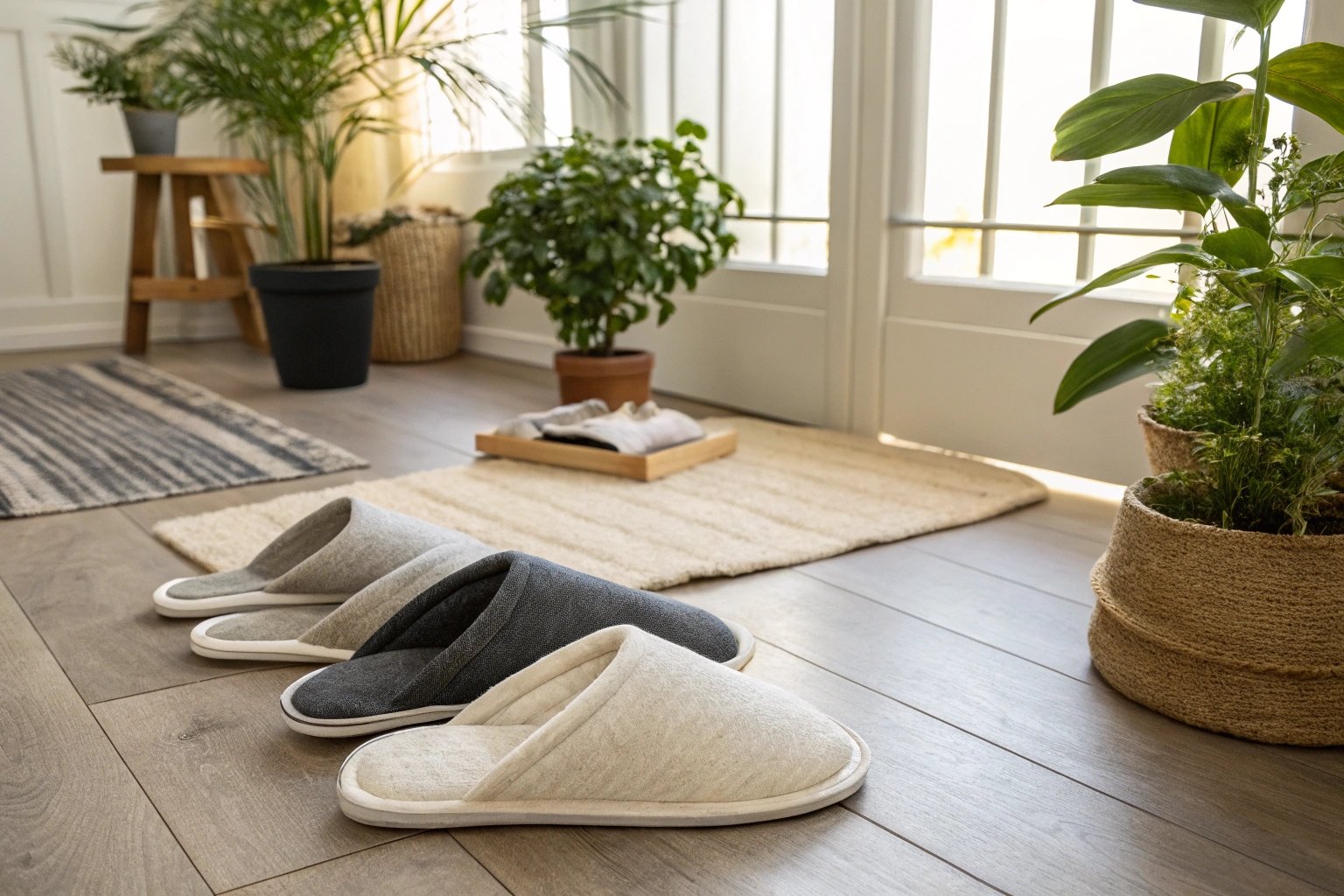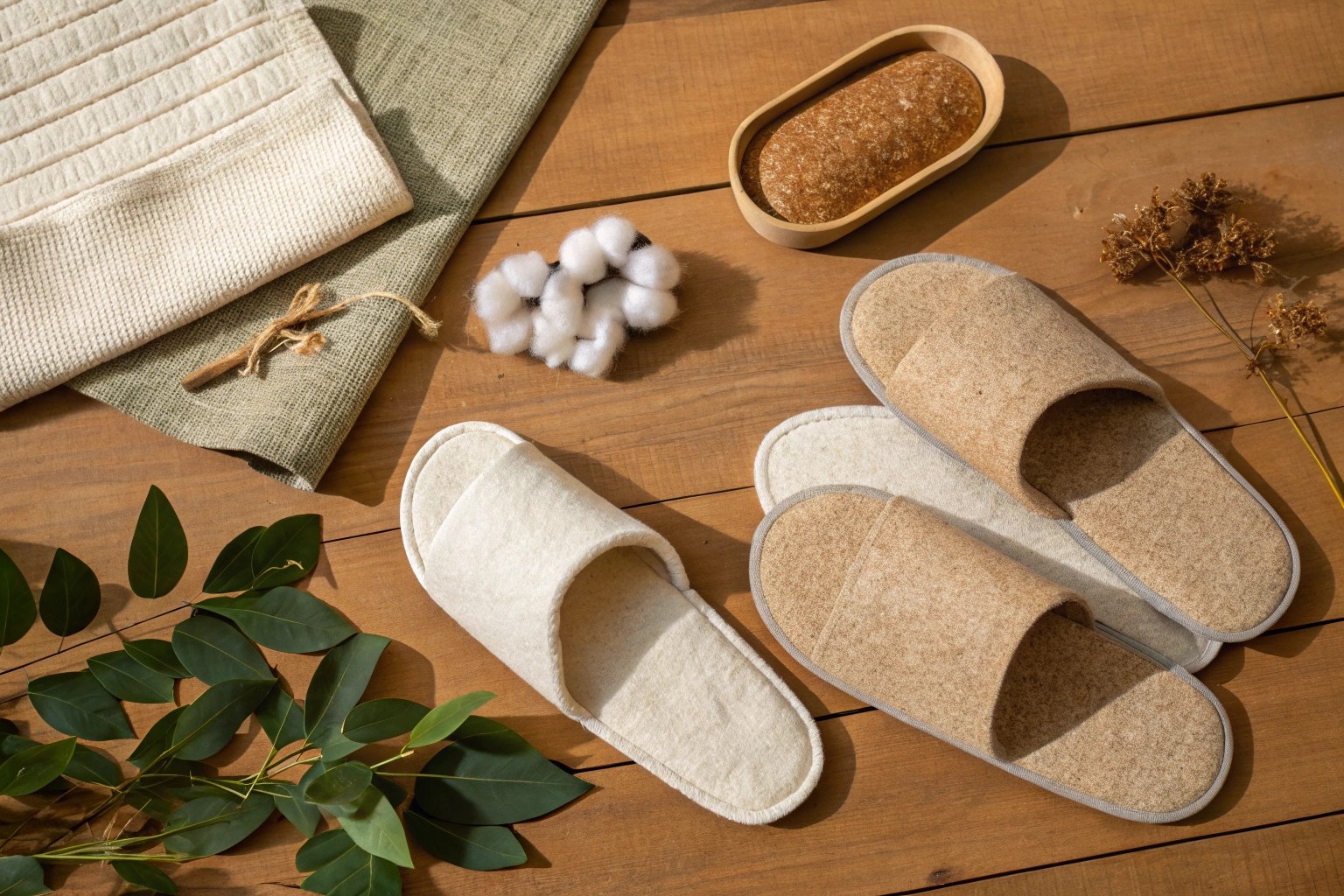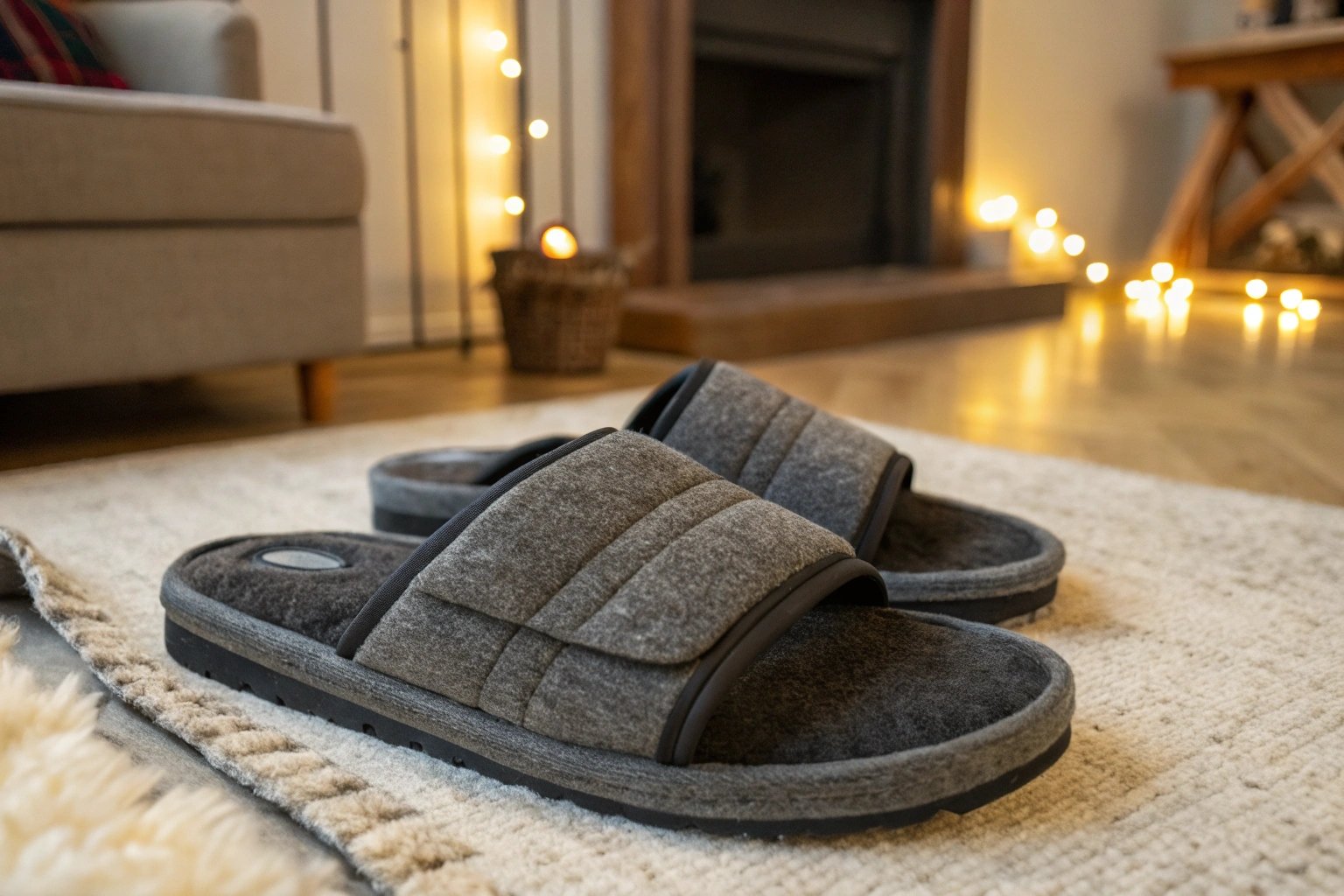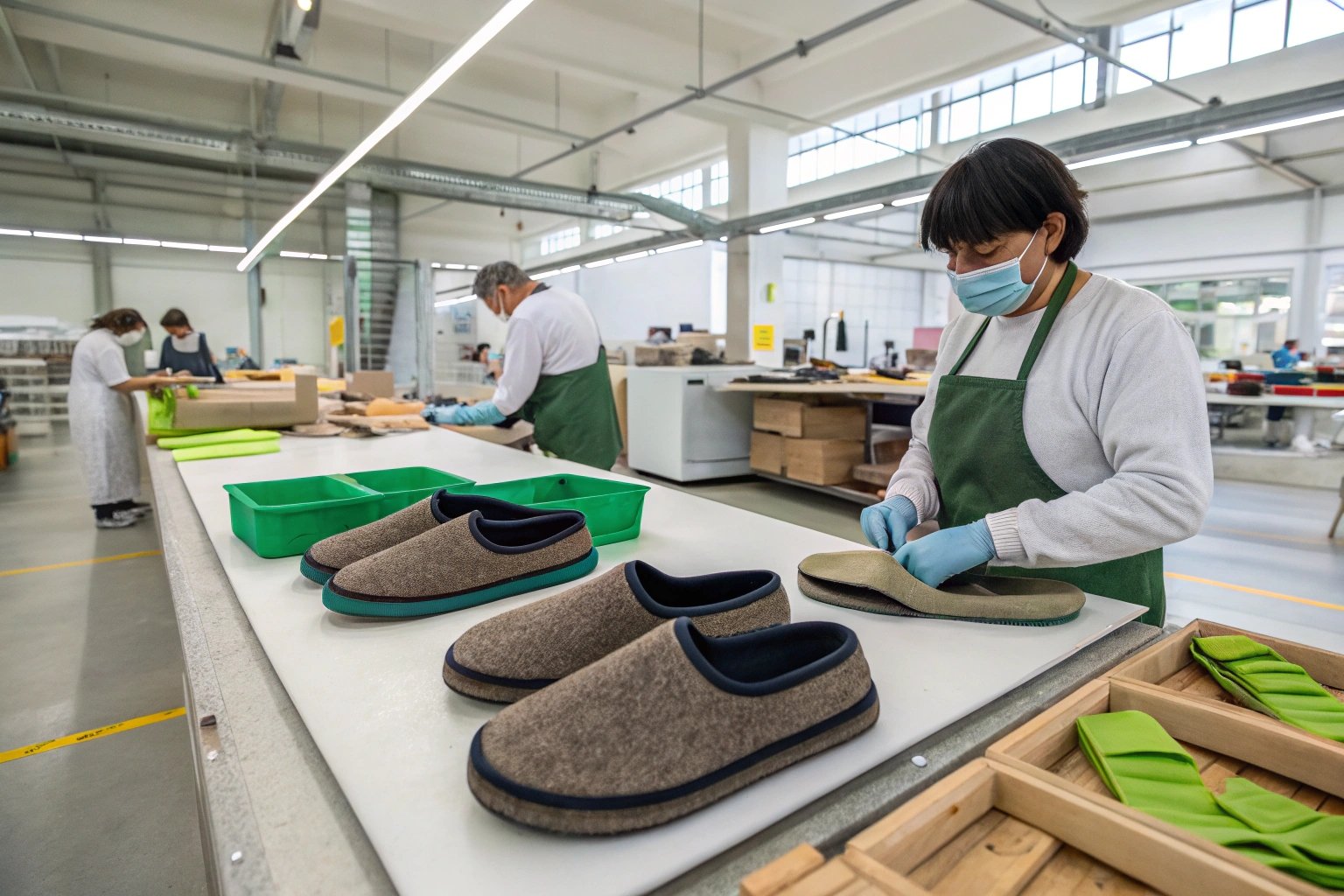Creating reusable and environmentally friendly indoor slippers can be challenging. Are you tired of constantly replacing worn-out slippers? Looking for solutions to create sustainable slipper designs?
The process of making reusable indoor slippers involves selecting durable materials, designing ergonomic shapes, and considering the sustainability of the overall production. Utilizing recycled materials and innovative designs ensures longevity and environmental friendliness for slippers used indoors.

Crafting the perfect pair of environmentally-friendly slippers starts with the meticulous selection of materials. When designing, one must focus on using durable and sustainable elements. Opting for recycled materials can significantly reduce waste and increase the lifespan of the slippers. But beyond materials, design plays a crucial role. Ergonomic design ensures comfort and functionality, adding to the slipper’s durability. Let’s delve deeper.
What Materials Are Ideal for Reusable Indoor Slippers?
Do eco-friendly materials actually make a difference in durability and comfort?
Ideal materials for reusable slippers include recycled or sustainable fabrics like organic cotton, hemp, or fleece. The soles can be made from recycled rubber or cork for durability and slip resistance. These materials are not only eco-friendly but also enhance comfort and longevity.

Choosing the right material is paramount. Organic cotton is soft and breathable, making it perfect for use in warm conditions indoors. Hemp offers strength and durability that withstands many user demands. Fleece, being warm and plush, suits colder environments while providing comfort. The soles can be crafted from recycled rubber, which offers exceptional durability and slip resistance, perfect for indoor wooden floors or tiles. Alternatively, cork is a sustainable option that molds comfortably underfoot and absorbs shock. It’s necessary to weigh these materials for both environmental impact and functionality to ensure slippers are both reusable and eco-friendly.
How To Design Slippers For Comfort And Sustainability?
Can ergonomic designs truly enhance the value and sustainability of slippers?
Ergonomic designs focus on the foot’s natural contours and movement, improving comfort for prolonged wear. Incorporating adjustable straps and contoured footbeds with eco-friendly materials ensures sustainable usability and enhances the slipper’s overall value.

Design is crucial when considering sustainability. Ergonomics ensures the slippers mold to the foot’s contours and supports natural movement. Including adjustable straps allows flexibility for users while maintaining a secure fit. Sustainable footbeds constructed with materials like recycled foam or cork offer superb shock absorption, comfort, and longevity. Additionally, such intentional designs reduce the risk of premature damage, aligning with the goal of reusability. When focusing on design coupled with ideal materials, one breathes longevity into every slipper pair, making them ideal for sustainable indoor use.
The Production Process: How To Maintain Eco-Friendliness?
How can sustainable practices in production make a difference?
Maintaining eco-friendliness during production involves using renewable energy sources, minimizing waste through efficient manufacturing processes, and adhering to recycling initiatives. Upholding these practices ensures slippers are produced in line with environmental goals.

Adopting sustainable practices throughout production sets the foundation for eco-friendly slippers. Renewable energy collaboration powered by solar or wind reduces carbon footprints and enhances operational sustainability at factories. Optimizing manufacturing processes to minimize waste and maximize material usage plays a significant role in environmental conservation. Through strict recycling initiatives, every scrap or excess can be repurposed. This creates a balance, ensuring slippers are crafted with minimal environmental disruption. By focusing on these practices, the lifecycle of each slipper extends, reinforcing the commitment to sustainability in both material and manufacturing methods.
Conclusion
Creating reusable, environmentally-friendly indoor slippers combines selecting sustainable materials, ergonomic designs, and eco-friendly production practices, ensuring lasting comfort and durability.

